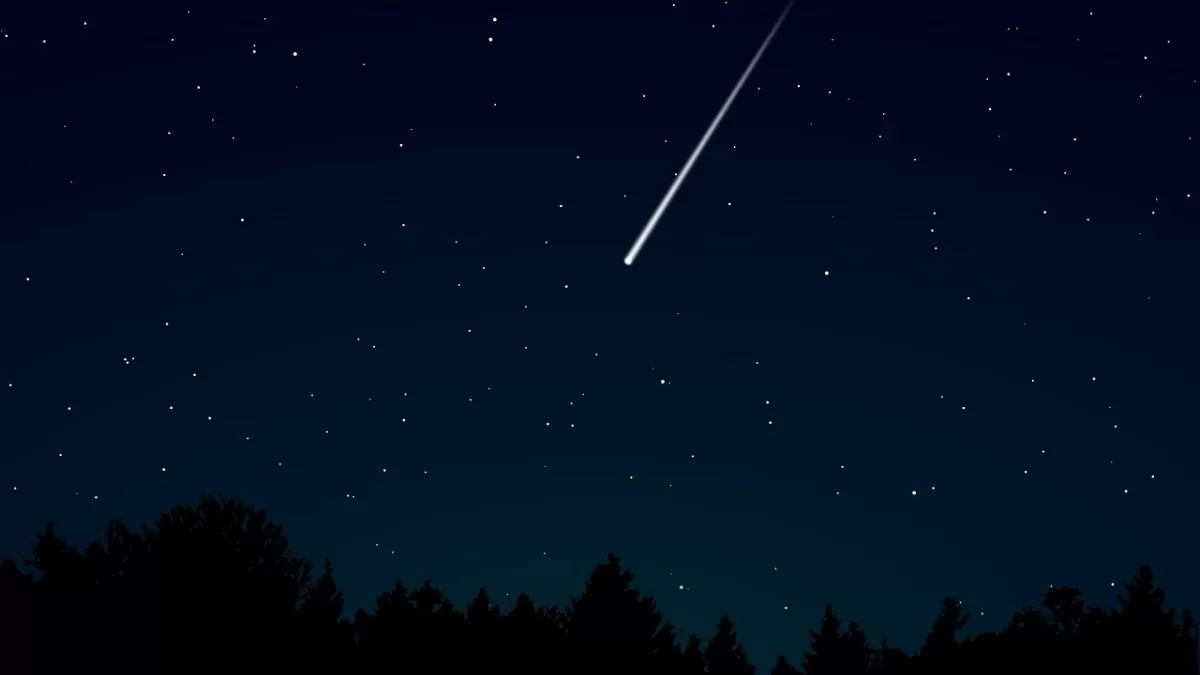Comet Tsuchinshan-ATLAS, also known as C/2023 A3, is set to dazzle the night sky this month as it makes its closest approach to Earth. Astronomers are predicting that the comet will reach its peak brightness around October 9, making it potentially visible even during the day. This rare celestial event has captured the attention of stargazers and scientists alike, and observers are encouraged to find dark locations for optimal viewing. This could be a once-in-a-lifetime opportunity to witness a comet that may not return for thousands of years.
Comets have long been objects of fascination and wonder for humans. These icy bodies, often likened to “dirty snowballs,” originate in the outer reaches of our solar system and occasionally make their way towards the sun, leaving a trail of gas and dust in their wake. The name Comet Tsuchinshan-ATLAS comes from the two observatories in Taiwan and Hawaii that first discovered it in January 2023. Since then, astronomers have been eagerly tracking its journey towards Earth.
The comet is currently traveling at a speed of 37 kilometers per second, making its closest approach to our planet on October 9. At this point, it will be approximately 38 million kilometers away, which may seem like a vast distance, but in astronomical terms, this is considered a close encounter. As it continues on its journey, the comet will gradually move away from Earth, becoming fainter and harder to spot.
What makes this comet even more special is that it is considered a “long-period” comet, meaning it takes thousands of years to complete a single orbit around the sun. This means that once it passes by Earth, it may not return for thousands of years, making this a truly rare and unique event. Astronomers estimate that Comet Tsuchinshan-ATLAS was last in our corner of the solar system around 3,600 years ago, and it won’t be back for another 6,000 years.
But what exactly can we expect to see from this comet? According to experts, it will be visible to the naked eye, appearing as a fuzzy, greenish object in the night sky. As it gets closer to Earth, the comet’s coma, a cloud of gas and dust surrounding the solid nucleus, will become more prominent, making it easier to spot. And if you’re lucky enough to have access to a telescope or binoculars, you may even be able to see the comet’s tail, which can stretch for millions of kilometers.
For those interested in catching a glimpse of this cosmic spectacle, the best time to look for Comet Tsuchinshan-ATLAS will be in the early hours of the morning, just before sunrise. It will be in the eastern sky, near the constellation of Leo, and will gradually move towards the north as the month progresses. The comet’s peak brightness is expected to occur around October 9, but it will still be visible for a few weeks after that.
However, finding a dark location to view the comet is crucial. Light pollution from cities and towns can make it difficult to see faint objects in the night sky, so it’s best to head to a rural area away from any artificial light sources. Also, be patient, as it may take some time for your eyes to adjust to the darkness and for the comet to become visible.
For those who are unable to view the comet due to cloudy weather or other factors, fear not. There will likely be plenty of images and videos shared online by astrophotographers capturing the comet’s journey. These can be just as awe-inspiring and can allow us to experience the beauty of the comet from the comfort of our own homes.
In addition to being a stunning sight to behold, Comet Tsuchinshan-ATLAS also presents a unique opportunity for scientists to study its composition and behavior. By analyzing the gas and dust released by the comet, researchers can gain insights into the conditions in the outer reaches of our solar system and the formation of comets themselves.
So mark your calendars and set your alarms for the early hours of the morning. This month’s close approach of Comet Tsuchinshan-ATLAS is a once-in-a-lifetime event that you won’t want to miss. Whether you’re a seasoned stargazer or just looking for a new and exciting experience, this is the perfect opportunity to witness the beauty and mystery of our universe. So don

